
JULY 2006
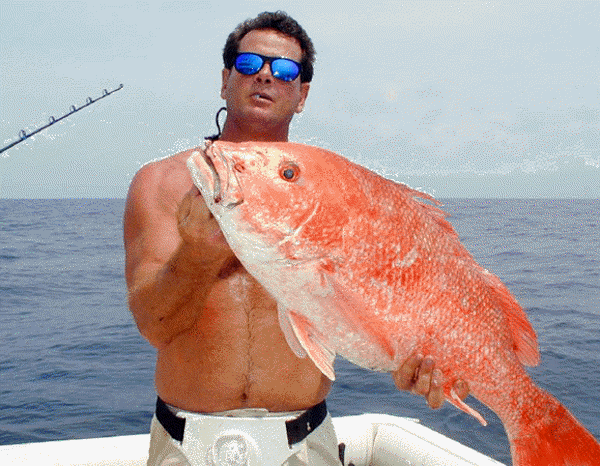
Hawaiian Marine Reserve To Be World's Largest
Bush to Designate National Park in Pacific Waters
By Juliet
EilperinWashington Post Staff
Writer
Thursday, June 15, 2006; Page A01
President Bush plans to designate an island chain
spanning nearly 1,400 miles of the Pacific northwest of
Hawaii as a national monument today, creating the largest
protected marine reserve in the world, according to
sources familiar with the plan.
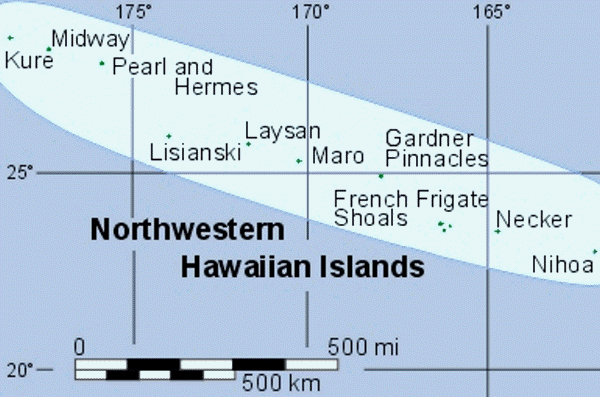
| The
Land. Formed by
volcanic activity over a period of 70 million
years, the Hawaiian Islandscontain an endless
variety of peaks, valleys, ridges, and broad
slopes. Many of
these volcanoes formed islands that have subsided
and eroded beneath sea level, and some of the old
volcanoes probably never reached sea-level. Flora
& Fauna. The Hawaiian
archipelago is home to a wide variety of plants
and animals, some of which exist only in
Hawai‘i. Because of geographic isolation of
the island chain and the small population size of
most of the indigenous flora and fauna, it is the
home of hundreds of endangeredor threatened
plants and animal. There are more endangeredspecies
per square mile on these islands than any other
place on the planet. |
Establishing the Northwestern Hawaiian Islands as a strictly protected marine reserve, which Bush is slated to announce this afternoon, could prove to be the administration's most enduring environmental legacy. The roughly 100-mile-wide area encompasses a string of uninhabited islands that support more than 7,000 marine species, at least a fourth of which are found nowhere else on Earth.
The islands include almost 70 percent of the nation's tropical, shallow-water coral reefs, a rookery for 14 million seabirds, and the last refuge for the endangered Hawaiian monk seal and the threatened green sea turtle. The area also has an abundance of large predatory fish at a time when 90 percent of such species have disappeared from the world's oceans.
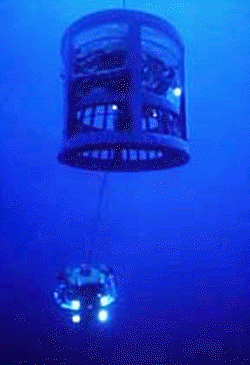 While
it has the distinction of being the largest
marine reserve in the United States, it is also
the most poorly known, particularly below the
depths accessible by SCUBA. That, however, is
changing as various agencies are joining forces
to use deep submergence vehicles for exploring
and studying its strange and magnificent realms
below 200 ft. Until last year, only nine
submersible dives had ever been conducted in this
region. In September 2001 that number was more
than doubled during a two and a half week cruise
aboard the R/V Kaimikai-o-Kanaloa (KOK). A team
of researchers led by NOAA's Hawaii
Undersea Research Laboratory (HURL) and the National Marine
Fisheries Service Honolulu Laboratory (NMFS-HL)
made ten 8-hr daylight dives in the Pisces V
submersible on East French Frigate Shoals,
Brookes Bank, West St. Rogatien Bank, Raita Bank,
and a deep pinnacle north of French Frigate
Shoals. The project involved 24-hour operations,
so each evening, after the sub was recovered, the
RCV-150 ROV (above) was deployed for another 8
hours to obtain noctural observations. Finally,
from 3 to 7 a.m., the KOK's Sea Beam multibeam
sonar system was used to map tracks across and
around the banks in an effort to determine their
true geographic positions. While
it has the distinction of being the largest
marine reserve in the United States, it is also
the most poorly known, particularly below the
depths accessible by SCUBA. That, however, is
changing as various agencies are joining forces
to use deep submergence vehicles for exploring
and studying its strange and magnificent realms
below 200 ft. Until last year, only nine
submersible dives had ever been conducted in this
region. In September 2001 that number was more
than doubled during a two and a half week cruise
aboard the R/V Kaimikai-o-Kanaloa (KOK). A team
of researchers led by NOAA's Hawaii
Undersea Research Laboratory (HURL) and the National Marine
Fisheries Service Honolulu Laboratory (NMFS-HL)
made ten 8-hr daylight dives in the Pisces V
submersible on East French Frigate Shoals,
Brookes Bank, West St. Rogatien Bank, Raita Bank,
and a deep pinnacle north of French Frigate
Shoals. The project involved 24-hour operations,
so each evening, after the sub was recovered, the
RCV-150 ROV (above) was deployed for another 8
hours to obtain noctural observations. Finally,
from 3 to 7 a.m., the KOK's Sea Beam multibeam
sonar system was used to map tracks across and
around the banks in an effort to determine their
true geographic positions. |
Encompassing nearly 140,000 square miles, an area nearly the size of Montana and larger than all the national parks combined, the reserve will just surpass Australia's Great Barrier Reef Marine Park as the largest protected marine area in the world. It will also, however, be one of the least accessible.
"This is a landmark conservation event," said Joshua Reichert, who heads the Pew Charitable Trusts' environment programs and had pushed to have the area designated as a marine sanctuary. "The government is saying in certain places, for certain reasons, it is important to restrict activities that have the potential to damage the marine environment, of which fishing is a big one."
"The Northwestern Hawaiian Islands represent an incredible opportunity to preserve nature much as it was, or has been, for millions of years, because the hand of man has not wreaked the same kind of havoc as we have elsewhere in the world," said Rep. Ed Case (D-Hawaii), who has lobbied for the designation since he was elected in 2002.
The plan had been resisted by local Hawaiian fishing interests that feared losing access to traditional fishing grounds.
The nation has 13 marine sanctuaries scattered from the Florida Keys to the Channel Islands off the California coast. They provide varying levels of protection and have had mixed success in preserving sensitive ecosystems. In areas where fishing was banned outright, scientists have charted a resurgence of larger fish and coral reefs, but in areas that allow commercial and recreational fishing, damaged ecosystems have struggled to rebound.
Administration officials declined to comment on the record, but one senior official, who spoke on the condition of anonymity to avoid upstaging the president's announcement, said the plan will end fishing in the area within five years. It will allow Hawaiians to have access to the area for other traditional activities and will include the Midway World War II memorial, a facility that is open for research, education and ecotourism. Visitors wishing to snorkel, dive or take photographs in the area will have to obtain a permit, and no one may take fish, wildlife, corals or minerals from the region.
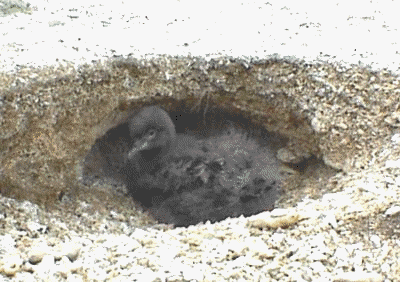
Wedge-tailed Shearwater chick. The
pressure for nesting space is so intense that birds have
carved out niches wherever possible - even
underground.The pressure for nesting space is so intense
that birds have carved out niches wherever possible -
even underground.
President Theodore Roosevelt established a bird sanctuary on some of the islands in 1909. President Bill Clinton created a coral-reef ecosystem reserve in the area by executive orders in late 2000 and early 2001, but he stopped short of designating a permanent sanctuary. Former House speaker Newt Gingrich (R-Ga.) sent the White House a letter in February hailing the sanctuary plan as "a marvelous opportunity to leave a historic mark on U.S. and world conservation history." Hawaii Gov. Linda Lingle (R) also endorsed the idea.
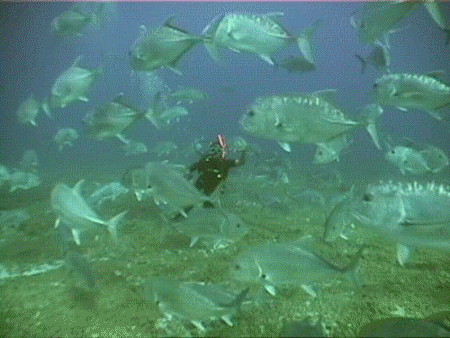
The proposal has had a cooler reception from Democratic Sens. Daniel K. Inouye and Daniel K. Akaka, who have traditionally been protective of local fishermen, but the administration is relying on a coalition of environmental groups -- headed by the Pew Charitable Trusts -- to raise the money for buying out the fishermen.
By declaring the islands a national monument, Bush will circumvent a year-long congressional approval process required in the designation of an area as a marine sanctuary, and will provide the area the highest regulatory protection possible under the law. Clinton designated several terrestrial and marine national monuments toward the end of his tenure, though he did not name a marine monument of this scope.
"Declaring the Northwestern Hawaiian Islands a national monument will mean immediate protection, immediate implementation of the management measures included in the plan that was developed in the marine sanctuary process," the senior official said last night.
Ellen Athas of the Ocean Conservancy said the monument designation is "permanent and does not undergo periodic review like a marine sanctuary." She added: "National monuments can provide lasting protection for the environment."
Eight Hawaiians hold permits to fish commercially in the area, targeting red snapper, black grouper and other species. The fishery made a profit of only $300,000 in 2003, and one of the permitted fishermen, Zenen Ozoa, has lobbied to close it on the grounds that it is too environmentally destructive.
The island archipelago is remote -- it takes fishermen two days to reach the area from the main islands -- but debris from vessels that troll the Pacific have ensnared marine animals and damaged the delicate ecosystem. Filmmaker Jean-Michel Cousteau, son of legendary marine explorer Jacques Cousteau, spent six weeks there in 2003 and found debris from 52 countries, including cigarette lighters and toy soldiers.
"That was really shocking," said Cousteau, who produced two one-hour documentaries that aired on public television in April. "There's a lot of really nasty stuff happening over there."
Although the islands are remote, they remain vulnerable: Fishing vessels took about 12 million lobsters from the area between 1977 and 1997, and though a federal judge ordered the lobster fishery closed in 2000, the area has yet to recover.
In contrast to the controversies over administration stands on a number of other environmental issues, advocacy groups, activists and Democrats hailed Bush's work on this matter. Case, the Hawaii congressman, said the president "deserves credit" for undertaking "the most revolutionary act by any president, any administration, in terms of marine resources."
James L. Connaughton, chairman of the White House Council on Environmental Quality, toured the islands in December with Cousteau and Lingle.
First lady Laura Bush has also taken a personal interest in the island chain, said the senior administration official. She and the president hosted a White House screening of Cousteau's film on April 5.
Case, whose district includes the Northwestern Hawaiian Islands, said that, ironically, the designation means fewer Americans will see the region.
"We are all going to have to take it on faith
that it's that special, because . . . most of us will
never see it, and we never should see it," Case
said. "We're just going to have to let it go."
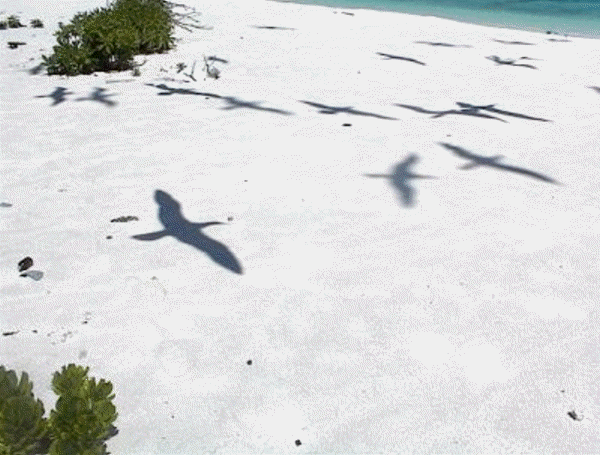
Kure Atoll by 'Aulani Wilhelm
Combined, our landing and day-long visits to Nihoa and Necker Islands have been the highlight of my trip so far. A close second, however, has been our extended visit to Kure Atoll, the northernmost and westernmost land mass in the Hawaiian Archipelago and the site of the northernmost coral reefs in the world.
Kure is the only island or atoll in the Northwestern Hawaiian islands that is managed by the State of Hawaii. It's management agency is the Department of Land and Natural Resources, the department I work for as the public information officer.
The Rapture arrived at Kure Atoll on Sunday, October 1, after a brief day long and overnight stay on Midway. When Rapture reached the edge of the atoll, seas were relatively calm, although not as calm as the seas we'd experienced at French Frigate Shoals. We arrived around mid-day and everyone quickly prepared for our work ahead. Divers geared up with their regulators and wetsuits, hoping they would be warm enough underwater. The ocean temperature at 28 degrees north latitude is much colder than it was 650 miles to the south.
The land team, which includes the media and education team; terrestrial biologists Beth Flint and Gordon Nishida; and Ethan Shiinoki and Nalu Yen of the Hawaii Department of Land and Natural Resources' wildlife program, also prepared for their landing at Green Island. Green Island is the only permanent island within Kure Atoll. Because of the amount of gear we had (which included all kinds of equipment and gear the wildlife guys would be using to conduct their work on island) we couldn't all fit into the 2 zodiacs that had been assigned to transport us to the island. Much to our unhappiness the education team got left behind with the chance that we wouldn't be able to land on island until the next day. Luckily, the seas and skilled zodiac drivers were able to transport the first set of people and gear quickly, enabling us to make a second landing before nightfall. Relieved, my team boarded the zodiacs and high-tailed it to Green Island ready to set up camp and prepare for the days ahead.
Aside from the wildlife crew, only Monte Costa (our still photographer) and Cal Hirai (our videographer) had been to Kure before. Monte had served as a National Marine Fisheries Service volunteer twice, in 1998 and in 1991. Her job while on island was to take care of young female monk seal pups that had been recently weaned from their mothers. Because mortality had been high and the ratio of male to females was so skewed, these young seals were kept in large ocean to land enclosures to protect them from sharks and get them strong enough and big enough to survive in the wild on their own. Monte said her job was to "fish everyday to feed the seals." Rough.
Believe it or not, Cal had spent a mere 6 hours on Kure about 10 years ago when he was hired as a photographer to shoot "Coasties" (Coast Guard personnel) who were stationed on the island wrapping and eating McDonald's hamburgers. (At least that's what I think he said.) Needless to say, Cal didn't really get to see the island then. This was his chance to make up for the brief encounter.
For Beth, Gordon, Guy and I, we were neophytes to the island. Personally, I didn't know quite what to expect. In fact, I had very limited expectations about what the island would be like.
Our zodiac dropped us on the lagoon side of the island near the only pier. I was so worried about dropping Cal's camera overboard in our choppy transit from the Rapture that I hadn't noticed the amazing color of the water or the incredible sandy lagoon we had traversed. My mind was focused on hauling all our gear, food and equipment to our campsite near the center of island before dark. After all, I still had to write and send my daily news update for posting on the website. (Writing 'on-demand' each day is getting more and more challenging.)
Once we got settled we each realized how hungry we were. Luckily, Guy had brought with him food from home that he knew Cal, Beth, Gordon and I would really appreciate after being at sea for eleven days. Out of a collapsible cooler he drew laulau, poi, dried fish, lomi lomi salmon and kalua pig. I think the food was brought mainly to appease me. He knew hawaiian food would make me feel better after spending the first week and a half of the expedition struggling through technical complications with our equipment. Guy's smart. I'm pretty simple that way. A little food - good food-- goes a long way toward improving my outlook on life. And I wasn't the only beneficiary. The food was a real treat for everyone. It afforded us the opportunity to sit and 'break bread (or poi in this case)' together as a team and bond. Combined with the wonderful company and the songs of Country Comfort entertaining us from Nalu's portable CD player, the candlelit evening in the cool air, under the star riddled sky, is one that will be etched in my memory forever. Before the evening was over, we had all become good friends and had already started planning a post-expedition reunion.
The only thing, or I should say, person that was missing from the table was Dennis Kawaharada, our education team member who completed his expedition stint at Kure on the 30th. He had planned to be with us on Kure, but piles of work called him back home prematurely. Dennis would've really appreciated the shallow lagoon waters on island where he could've taken his daily workout swims. He would've also appreciated being on solid land for several days, after being seasick aboard the Rapture. He'll just have to hear about the trip at the reunion.
Our days on Kure were marked by contrast and contradiction. As a wildlife refuge, the island is home to 16 species of seabirds that breed on Green Island and is a place of rest for several migratory birds, Hawaiian monk seals and green sea turtles. The playful and inquisitive white terns and brown boobies swoop low on a regular basis to check visitors out. It's hard to traverse the beach without being forced off your path by at least one basking monk seal whom you have to meander around to avoid disturbing. Around the reefs and coral heads just offshore there are fish that can't be found in the lower Hawaiian islands - either because they've been overfished or no longer have suitable habitat needed to survive. Some of the species, however, are only found at Kure. Given the isolation of the atoll, these marine critters were forced to adapt and evolve differently, just to survive.
The contrast and contradiction is that this island is also littered by excessive amounts of marine debris -- a graveyard of virtually everything that floats. It is also the site of many shipwrecks, pieces of which remain scattered around the atoll. All of which mar what would otherwise be a flawless beachscape. To add to the contrast, higher up on land above the high water mark, seabirds and native plants struggle against aggressive introduced weeds and insects that are quickly taking over the island. And until just a few years ago these same plants and birds were being decimated by rats.
Despite the contradictions, Kure is truly an amazing place. In fact the constrasts give the place added character. Kure is filled with mana (spirit) of her own. As the oldest land mass remaining in the chain, Kure is our ancestor, birthed millions and millions of years before the main Hawaiian islands. The life she lived when she was a full, high island like Maui or Oahu will never be known by us. But for the few lucky people who are afforded the opportunity to visit her shores, swim in her waters and experience the shelter she provides for the seabirds, monk seals, turtles and marine life that reside in her bosom, we can attest that the life she lives now is one of amazing grace.
Leaving Kure will probably be the most difficult part of this entire journey for me. We've built a relationship with her, and she with us. Our last few hours on the island were bittersweet. We each finished our work on the island in solitude, spending our own personal time with the island. I spent 2 1/2 hours weedwacking away the verbesina (golden crown beard) weed from the central radial on the island where the LORAN communication antenna once stood. From what the wildlife guys told me, that's the place the albatross like best when they land and select nesting sites. Somehow, weedwacking (something I would never do at home) was therapy for me. It gave me a chance to, in some small way, give back to the island and the wildlife that made my visit there so special. In the big picture, the deed was small. It won't make a dent in the long term care and management of the place. But hopefully, for the albatross who will begin landing on island next month, the cleared area will make it easier for them to survive in a world that is increasingly inhospitable to wildlife.
As we left the island in our zodiac and traversed the lagoon for the final time, we all commented on the color of the water. What color was it? Greenish blue? Turquoise? Blue Lagoon blue?
No... it's Kure blue, we agreed. And there is no other color in the world just like it.